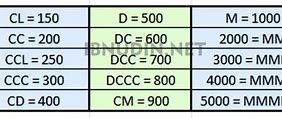
Loan words of English origin
Many English words were incorporated into Indonesian through globalization. Many Indonesians, however, mistake words already adopted from Dutch as words borrowed from English. Indonesian adopts English words with standardization.[110] For example: aksesori from accessory.[111][112] However, there are several words that directly borrowed without standardization that have same meanings in English such as: bus, data, domain, detail, internet, film, golf, lift, monitor, radio, radar, unit, safari, sonar, video, and riil as real.[112]
Modern Indonesian draws many of its words from foreign sources, there are many synonyms. For example, Indonesian has three words for "book", i.e. pustaka (from Sanskrit), kitab (from Arabic) and buku (from Dutch boek); however, each has a slightly different meaning. A pustaka is often connected with ancient wisdom or sometimes with esoteric knowledge. A derived form, perpustakaan means a library. A kitab is usually a religious scripture or a book containing moral guidance. The Indonesian words for the Bible and Gospel are Alkitab and Injil, both directly derived from Arabic. The book containing the penal code is also called the kitab. Buku is the most common word for books.
There are direct borrowings from various other languages of the world, such as karaoke (from カラオケ) from Japanese, and ebi (from えび) which means dried shrimp. Many words that originally are adopted through the Dutch language today however often are mistaken as English due to the similarity in the Germanic nature of both languages. In some cases the words are replaced by English language through globalization: although the word arbei (Dutch: aardbei) still literally means strawberry in Indonesian, today the usage of the word stroberi is more common. Greek words such as demokrasi (from δημοκρατία dēmokratía), filosofi, filsafat (both from φιλοσοφία philosophia), mitos (from μῦθος mythos) came through Dutch, Arabic and Portuguese respectively.
It is notable that some of the loanwords that exist in both Indonesian and Malaysian languages are different in spelling and pronunciation mainly due to how they derived their origins: Malaysian utilises words that reflect the English usage (as used by its former colonial power, the British), while Indonesian uses a Latinate form (e.g. aktiviti (Malaysian) vs. aktivitas (Indonesian), universiti (Malaysian) vs. universitas (Indonesian)).
Loan words of Sanskrit origin
The Sanskrit influence came from contacts with India since ancient times. The words were either borrowed directly from India or with the intermediary of the Old Javanese language. Although Hinduism and Buddhism are no longer the major religions of Indonesia, Sanskrit, which was the language vehicle for these religions, is still held in high esteem and is comparable with the status of Latin in English and other Western European languages. Sanskrit is also the main source for neologisms, which are usually formed from Sanskrit roots. The loanwords from Sanskrit cover many aspects of religion, art and everyday life.
From Sanskrit came such words as स्वर्ग surga (heaven), भाषा bahasa (language), काच kaca (glass, mirror), राज- raja (king), मनुष्य manusia (mankind), चिन्ता cinta (love), भूमि bumi (earth), भुवन buana (world), आगम agama (religion), स्त्री Istri (wife/woman), जय Jaya (victory/victorious), पुर Pura (city/temple/place) राक्षस Raksasa (giant/monster), धर्म Dharma (rule/regulations), मन्त्र Mantra (words/poet/spiritual prayers), क्षत्रिय Satria (warrior/brave/soldier), विजय Wijaya (greatly victorious/great victory), etc. Sanskrit words and sentences are also used in names, titles, and mottos of the Indonesian National Police and Indonesian Armed Forces such as: Bhayangkara, Laksamana, Jatayu, Garuda, Dharmakerta Marga Reksyaka, Jalesveva Jayamahe, Kartika Eka Paksi, Swa Bhuwana Paksa, Rastra Sewakottama, Yudha Siaga, etc.
Because Sanskrit has long been known in the Indonesian archipelago, Sanskrit loanwords, unlike those from other languages, have entered the basic vocabulary of Indonesian to such an extent that, for many, they are no longer perceived to be foreign. Therefore, one could write a short story using mostly Sanskrit-derived words. The short story below consists of approximately 80 words in Indonesian that are all derived from Sanskrit, as well as a few native function words and affixes.
Geographical distribution
In 2020, Indonesian had 71.9 million native speakers and 176.5 million second-language speakers,[58] who speak it alongside their local mother tongue, giving a total number of speakers in Indonesia of 248.5 million.[59] It is common as a first language in urban areas, and as a second language by those residing in more rural parts of Indonesia.
The VOA and BBC use Indonesian as their standard for broadcasting in Malay.[60][61] In Australia, Indonesian is one of three Asian target languages, together with Japanese and Mandarin, taught in some schools as part of the Languages Other Than English programme.[62] Indonesian has been taught in Australian schools and universities since the 1950s.[63]
In East Timor, which was occupied by Indonesia between 1975 and 1999, Indonesian is recognized by the constitution as one of the two working languages (the other being English), alongside the official languages of Tetum and Portuguese.[8] It is understood by the Malay people of Australia's Cocos Keeling Islands in the Indian Ocean, also in some parts of the Sulu area of the southern Philippines and traces of it are to be found among people of Malay descent in Sri Lanka, South Africa, and other places.[16]
Old Malay as lingua franca
Trade contacts carried on by various ethnic peoples at the time were the main vehicle for spreading the Old Malay language, which was the main communications medium among the traders. Ultimately, the Old Malay language became a lingua franca and was spoken widely by most people in the archipelago.[28][29]
Indonesian (in its standard form) has essentially the same material basis as the Malaysian standard of Malay and is therefore considered to be a variety of the pluricentric Malay language. However, it does differ from Malaysian Malay in several respects, with differences in pronunciation and vocabulary. These differences are due mainly to the Dutch and Javanese influences on Indonesian. Indonesian was also influenced by the Melayu pasar (lit. 'market Malay'), which was the lingua franca of the archipelago in colonial times, and thus indirectly by other spoken languages of the islands.
Malaysian Malay claims to be closer to the classical Malay of earlier centuries, even though modern Malaysian has been heavily influenced, in lexicon as well as in syntax, by English. The question of whether High Malay (Court Malay) or Low Malay (Bazaar Malay) was the true parent of the Indonesian language is still in debate. High Malay was the official language used in the court of the Johor Sultanate and continued by the Dutch-administered territory of Riau-Lingga, while Low Malay was commonly used in marketplaces and ports of the archipelago. Some linguists have argued that it was the more common Low Malay that formed the base of the Indonesian language.[30]
Menciptakan Ilusi Hubungan Romantis
Penipu akan menciptakan gambaran hubungan romantis yang ideal dalam komunikasi dengan korban. Mereka akan memberikan komplimen, mengungkapkan perasaan cinta, dan bahkan membayangkan rencana masa depan bersama korban. Ini membuat korban semakin terikat emosional dengan penipu.
Pencurian Identitas dan Keuangan
Selain meminta uang, penipu juga bisa mencuri informasi pribadi korban, seperti data rekening bank atau informasi kartu kredit. Informasi ini dapat digunakan untuk pencurian identitas dan keuangan lebih lanjut, yang dapat merugikan korban secara serius.
Loan words of Portuguese origin
Alongside Malay, Portuguese was the lingua franca for trade throughout the archipelago from the sixteenth century through to the early nineteenth century. The Portuguese were among the first westerners to sail eastwards to the "Spice Islands". Loanwords from Portuguese were mainly connected with articles that the early European traders and explorers brought to Southeast Asia. Indonesian words derived from Portuguese include meja (from mesa = table), bangku (from banco = bench), lemari/almari (from armário = closet), boneka (from boneca = doll), jendela (from janela = window), gereja (from igreja = church), misa (from missa = mass), Natal (from Natal = Christmas), Paskah (from Páscoa = Easter), pesta (from festa = party), dansa (from dança = dance), pesiar (from passear = cruise), bendera (from bandeira = flag), sepatu (from sapato = shoes), garpu (from garfo = fork), kemeja (from camisa = shirt), kereta (from carreta = chariot), pompa (from bomba hidráulica = pump), pigura (from figura = picture), roda (from roda = wheel), nona (from dona = young woman), sekolah (from escola = school), lentera (from lanterna = lantern), paderi (from padre = priest), Santo, Santa (from Santo, Santa = Saint), puisi (from poesia = poetry), keju (from queijo = cheese), mentega (from manteiga = butter), serdadu (from soldado = soldier), meski (from mas que = although), kamar (from câmara = room), laguna (from laguna = lagoon), lelang (from leilão = auction), persero (from parceiro = company), markisa (from maracujá = passion fruit), limau (from limão = lemon), kartu (from cartão = card), Inggris (from inglês = English), Sabtu (from sábado = Saturday), Minggu (from domingo = Sunday), etc.[108]
Memanipulasi Emosi
Penipu akan mencari tahu tentang kehidupan korban dan mencari cara untuk memanipulasi emosinya. Mereka mungkin akan berpura-pura menghadapi masalah pribadi, kesulitan keuangan, atau situasi lain yang membuat korban merasa perlu memberikan dukungan dan bantuan.
Setelah membangun ikatan emosional, penipu akan mencari kesempatan untuk meminta uang dari korban. Mereka mungkin mengajukan permintaan uang dalam situasi yang mendesak, seperti biaya medis, bantuan keuangan, atau bantuan untuk proyek palsu. Alasan-alasan ini didesain untuk memancing respons emosional dan dukungan finansial dari korban.
Romance scamming atau love scamming adalah sebuah modus penipuan, di mana penipu berusaha memenangkan rasa kasih sayang dan kepercayaan korban, kemudian memanfaatkannya untuk mendapatkan uang. Love scammer cenderung sangat mahir dalam memanipulasi perasaan korban. Awalnya, mereka mungkin menghubungi calon korban melalui media sosial, situs kencan, atau platform online lainnya.
Seperti dirangkum dari laman FBI, modus operandi love scamming biasanya dijalankan dengan langkah-langkah sebagai berikut:
English-Indonesian dictionaries
Tibeto-Burman language spoken in Northeastern India
The Karbi language () is a Tibeto-Burman language spoken by the Karbi (also known as Mikir or Arlêng) people of Northeastern India.
It belongs to the Sino-Tibetan language family, but its position is unclear. Grierson (1903)[2] classified it under Naga languages, Shafer (1974) and Bradley (1997) classify the Mikir languages as an aberrant Kuki-Chin branch, but Thurgood (2003) leaves them unclassified within Sino-Tibetan. Blench and Post (2013) classify it as one of the most basal languages of the entire family.
Originally, there was no written form of the language, and like most languages of Northeast India, Karbi writing system is based on Roman script, occasionally in Assamese script. The earliest written texts in Karbi were produced by Christian missionaries, in Roman script, especially by the American Baptist Mission and the Catholic Church. The missionaries brought out a newspaper in Karbi titled Birta in the year 1903, Rev. R.E. Neighbor's 'Vocabulary of English and Mikir, with Illustrative Sentences' published in 1878, which can be called the first Karbi dictionary. Sardoka Perrin Kay's 'English–Mikir Dictionary' published in 1904, Sir Charles Lyall and Edward Stack's The Mikirs in 1908, the first ethnographic details on the Karbis and G.D. Walker's 'A Dictionary of the Mikir Language' published in 1925 are some of the earliest known books on the Karbis and the Karbi language and grammar.[3]
The Karbis have a rich oral tradition. The Mosera (recalling the past), a lengthy folk narrative that describes the origin and migration ordeal of the Karbis, is one such example.
There is little dialect diversity except for the Dumurali / Kamrup Karbi dialect, which is distinct enough to be considered a separate Karbi language.
Konnerth (2014) identifies two main variations of the Karbi language:
Data below are from Konnerth (2017).[4]
Karbi syllables may be the open (C)(C)V(V) or the closed (C)(C)VC. Possible onset consonant cluster combinations are as follows: /pl pr pʰl pʰr tʰr kl kr kʰr/.
There are three pairs of tones in Karbi: low (L), mid (M), and high (H). Unstressed syllables are often toneless. Clitics are toneless, but some suffixes, such as derivational suffixes, tend to have tone.
Karbi is a highly synthetic, agglutinating language, especially in predicate morphology. Karbi nouns are however typically analytic and isolating. It distinguishes first person inclusive and exclusive pronouns. Possessive a- and plural marker -tum are used to denote plurality in periphrastic level.
pí-nè-pinã-cē-dèt-jí-ma
what-INDF-DISTR.PL-NEG-PFV-IRR.2-Q
te mò pí-nè-pinã-cē-dèt-jí-ma ko jīrpō pu
therefore FUT what-INDF-DISTR.PL-NEG-PFV-IRR.2-Q buddy:VOC friend QUOT
'And there won't be any difficulties, my friend?'
Karbi noun phrase structure accepts enumeration constructions, RCs, and PCT modifiers to occur either side of the head noun. DEMs and (NP)POSRs are restricted to the front slots, and the plural marker takes the last slot.
pinì-ke nè e-sòn a-khobór mẽ-sén arjū-lōng
today-TOP 1SG.EXCL one-CLF:thing POSS-news(IND) be-good-INT hear-get
'Today I got good news'
Role-marking has three classes: unmarked NPs, marked with -phān (non-subject) and lōng (locative). Unmarked NPs refers to NPs that display clear from context what kind of syntactic/semantic role they play in the clause. The S arguments in intransitive clause are always unmarked, but O & A arguments may not be marked in Karbi differential object marking. OBL participants may remain unmarked as well if their role in clause in clear from context.
nang-pō-le hēmtāp a-ngsóng chō-tē nang-tūm-ke mandú-le chō
2SG-father-FOC.IRR tree.house POSS-high.up eat-if 2SG-PL-TOP field.hut-FOC.IRR eat
'If your father takes his meal in the tree house, you eat in the field hut'
Core arguments marked with -phān are syntactically participants with the O and R roles in clause.
beat.w/flexible-IDEO~DISTR.PL-PFV
chonghō a-phān jamír a-bú-pen sáp-phrát~phrát-dèt
frog POSS-NSUBJ grain.sp POSS-bundle-with beat.w/flexible-IDEO~DISTR.PL-PFV
'and with a bundle of jamir they beat the frog[...]'
Locative -lōng marks oblique locational expressions in NP relation of any semantic types, human O-like locational arguments, human R-like locational arguments, as well as it may replace relator noun that indicate specific locational and directional relations such as 'in', 'near', 'at', 'around' and such. In addition, a enclitic =pen is used to mark the instrumental, the comitative, the ablative. Diachronically, -pen is a clause final marker.
drop-go-in.a.fixed.place-REL
a-phì alòng thòn-dām-kòk-lò
POSS-grandmother LOC drop-go-in.a.fixed.place-REL
'and she left (the child) with the grandmother'
POSS-wise.person(IND)-female
join-follow.closely-REL
lasō a-bamón-pī alòng dùn-krì-lò
this POSS-wise.person(IND)-female LOC join-follow.closely-REL
'he followed his wife closely, he followed this bamónpī closely'
Clauses can combine together into a long chain of clauses by suffixing -si (non-final.realis), -ra (non-final.irrealis), -pen (non-final.with). Clausal chaining marks events in temporal sequence, and other clausal chaining constructions can carry out other functions.
POSS-mother-(additive.focus):DM
outside.part.Karbi.house
POSS-basket.for.firewood
leave.in.a.fixed.place-NF:REAL
entrance.area.Karbi.house
sit-big:(agent-orientated.verb)-NF:REAL
RECP-CAUS-suck-NF:REAL
stay-quiet-INF.COND.IMP
e [ánke a-pāi-tā pharlá dàm] [thēng a-khangrá ó-kòk-si] [hēm dàm-si] [hongkūp ingnì-lùn-si] [mōk che-pa-chū-si] [dō-jòi-nōi pō]
DS and.then POSS-mother-(additive.focus):DM outside.part.Karbi.house go firewood POSS-basket.for.firewood leave.in.a.fixed.place-NF:REAL house go-NF:REAL entrance.area.Karbi.house sit-big:(agent-orientated.verb)-NF:REAL breast RECP-CAUS-suck-NF:REAL stay-quiet-INF.COND.IMP father
'and then, the mother went and unloaded the firewood in the Pharla (Veranda), then went inside the house, sat down in the Hongkup, gave the child the milk, (and said) "be quiet, Daddy"'























